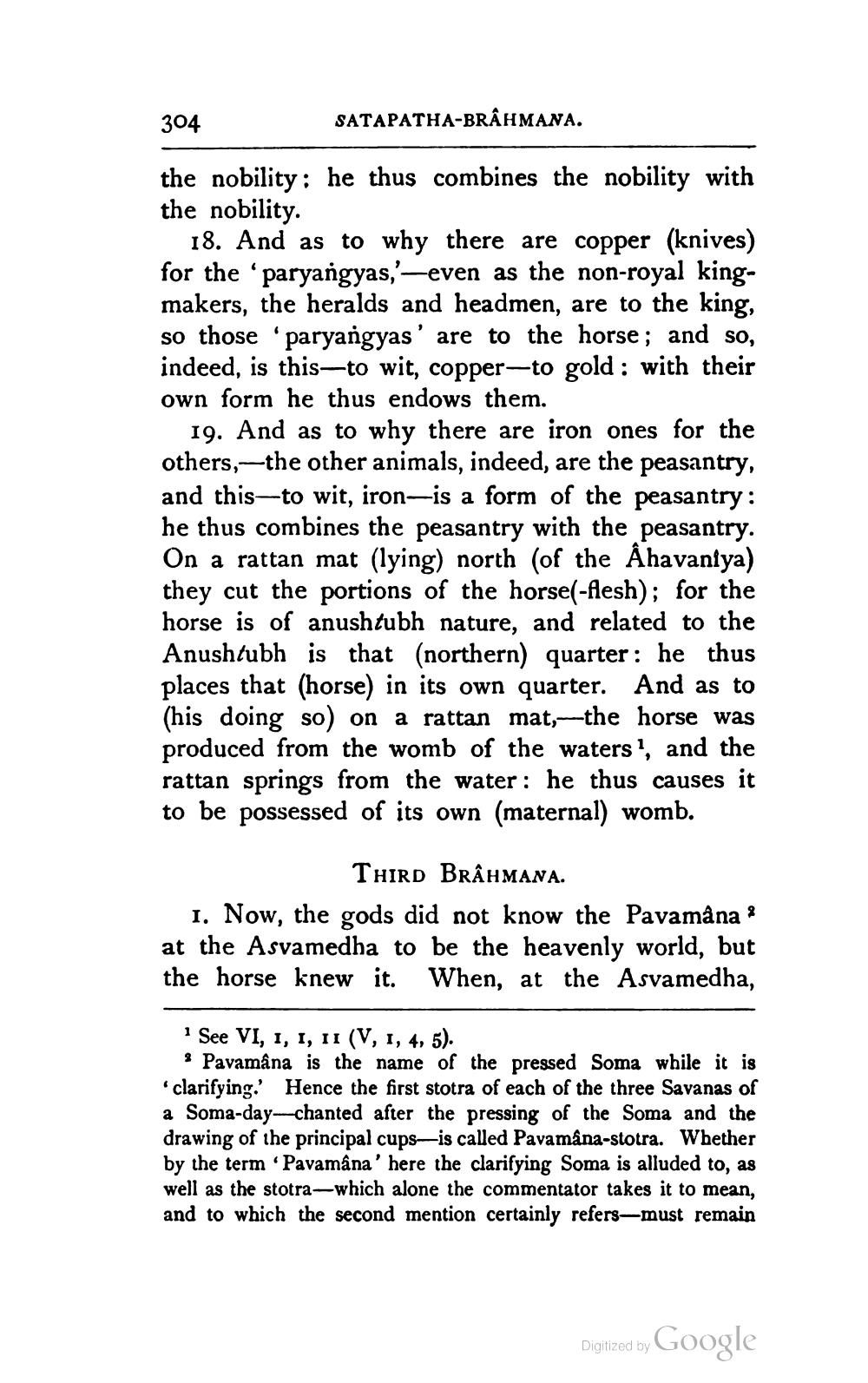________________
304
SATAPATHA-BRAHMANA.
the nobility: he thus combines the nobility with the nobility.
18. And as to why there are copper (knives) for the 'paryangyas,'—even as the non-royal kingmakers, the heralds and headmen, are to the king, so those 'paryangyas' are to the horse; and so, indeed, is this—to wit, copper—to gold : with their own form he thus endows them.
19. And as to why there are iron ones for the others,-the other animals, indeed, are the peasantry, and this-to wit, iron—is a form of the peasantry: he thus combines the peasantry with the peasantry. On a rattan mat (lying) north (of the Ahavaniya) they cut the portions of the horse(-Alesh); for the horse is of anushtubh nature, and related to the Anushtubh is that (northern) quarter: he thus places that (horse) in its own quarter. And as to (his doing so) on a rattan mat-the horse was produced from the womb of the waters', and the rattan springs from the water : he thus causes it to be possessed of its own (maternal) womb.
THIRD BRAHMANA. 1. Now, the gods did not know the Pavamâna at the Asvamedha to be the heavenly world, but the horse knew it. When, at the Asvamedha,
See VI, I, I, II (V, 1, 4, 5).
Pavamâna is the name of the pressed Soma while it is clarifying. Hence the first stotra of each of the three Savanas of a Soma-day-chanted after the pressing of the Soma and the drawing of the principal cups—is called Pavamâna-stotra. Whether by the term 'Pavamâna' here the clarifying Soma is alluded to, as well as the stotra—which alone the commentator takes it to mean, and to which the second mention certainly refers-must remain
Digitized by Google




